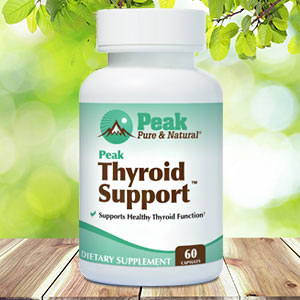Get Easy Health Digest™ in your inbox and don’t miss a thing when you subscribe today. Plus, get the free bonus report, Mother Nature’s Tips, Tricks and Remedies for Cholesterol, Blood Pressure & Blood Sugar as my way of saying welcome to the community!
The antioxidants that could lower HPV infection risk

Cervical cancer is the fourth most common female-specific cancer, contributing to 7.5 percent of global cancer deaths for women in 2018. Almost all cervical cancer can be linked to a previous infection with one or more high-risk strains of the human papillomavirus (HPV), which is spread through intimate contact. To help stop the spread, vaccination against HPV is strongly recommended for girls and boys between the ages of 9 and 12.
However, not all of us have had the HPV vaccine, so we need to take precautions such as using condoms during sex to protect against transmission. Scientists have been looking for other ways to defend against HPV infection, and they may have found one in a group of common proteins and vitamins…
Antioxidants could be the answer to reducing risk
Researchers at the LSU Health New Orleans Schools of Public Health and Medicine have discovered that maintaining adequate levels of five antioxidants may reduce infection with the high-risk strains of HPV (HR-HPV) associated with cervical cancer development.
Earlier studies have suggested oxidative stress may activate the onset of HPV-related cancer development, but there wasn’t a clear understanding of the association. The LSU study explored connections between 15 antioxidants and vaginal HPV infection status in 11,070 women ages 18 to 59 who participated in the 2003-2016 National Health and Nutrition Examination Survey.
The study tested four antioxidants produced within the body and 11 dietary antioxidants. Results demonstrated that lower levels of serum albumin and four dietary antioxidants — vitamins A, B2, E and folate — were associated with a higher risk of HR-HPV infection. Reduced levels of the dietary antioxidants also seemed to increase the chances of infection with HPV strains with a low risk of causing cervical cancer (LR-HPV).
Albumin is a protein in blood plasma that keeps fluid in your bloodstream and carries substances such as hormones, vitamins and enzymes throughout your body. Low levels of serum albumin are linked with increased systemic inflammation and impaired immune response.
Because albumin provided an independent contribution to HPV infection compared with the four vitamins, the researchers developed a separate nutritional antioxidant score based on the four dietary antioxidants.
“Our results showed that the women with the lowest quartile of the nutritional antioxidant score had a higher chance of both high-risk and low-risk HPV infection compared with the women with the highest quartile score after adjusting for other factors such as age, race, smoking, alcohol, and the number of sexual partners in past 12 months,” says lead author Dr. Hui-Yi Lin.
As for albumin, women with low levels of the protein had a significantly higher risk of HR-HPV infection.
Lin adds that because there is currently no effective antiviral therapy for genital HPV infection, it’s important for researchers to identify factors associated with HP-HPV infection that can be modified, such as antioxidants, to prevent the onset of cancer-causing HPV.
How best to get these antioxidants
As is the case with most vitamins, the best way to obtain these antioxidants is through foods containing the vitamins. For vitamin A, try adding orange fruits and vegetables like carrots, sweet potatoes and cantaloupe to your diet, along with red bell peppers and spinach. Vitamin B2, also known as riboflavin, can be found in grains, plants and dairy products. And to get folate, make sure your diet is rich in broccoli, brussels sprouts, green leafy vegetables, peas, chickpeas and kidney beans.
Vitamin E is a bit trickier. We’ve written before about vitamin E’s potential to reduce the risk of certain kinds of cancer, such as liver, breast, colon and prostate cancers. However, studies also have shown it can actually worsen certain cancers, such as lung cancer, so you need to be careful about how much vitamin E you consume.
To fully take advantage of vitamin E’s cancer-fighting properties, it’s important to get the right kind of vitamin E. As we noted in an earlier article, the kind of vitamin E found in most supplements, alpha-tocopherol, has shown no effect against cancer. By contrast, the gamma-tocopherol and delta-tocopherol forms of vitamin E have proven in studies to protect against cancer.
Because gamma-tocopherols and delta-tocopherols are found abundantly in food, you’re better off obtaining your vitamin E from dietary sources. Some foods especially rich in vitamin E include plant-based oils, almonds, sunflower seeds, broccoli, spinach, avocado, kiwi, trout and shrimp.
Finally, to maintain good albumin levels, make sure you’re getting enough protein in your diet from sources like nuts, eggs, and dairy products. Also, be careful not to drink too much, as alcohol can lower your blood protein levels.
Editor’s note: Discover how to live a cancer prevention lifestyle — using foods, vitamins, minerals and herbs — as well as little-known therapies allowed in other countries but denied to you by American mainstream medicine. Click here to discover Surviving Cancer! A Comprehensive Guide to Understanding the Causes, Treatments and Big Business Behind Medicine’s Most Frightening Diagnosis!
Sources:
Study Identifies Specific Antioxidants that May Reduce Oncogenic HPV Infection in Women — LSU Health New Orleans
Antioxidants Associated with Oncogenic HPV Infection in women — The Journal of Infectious Diseases
Cancer Facts for Women — American Cancer Society
Albumin Blood Test — MedlinePlus
Top 10 Foods Highest in Vitamin E — MyFoodData
Healthy Foods High in Vitamin A — WebMD
B vitamins and folic acid — NHS
Benefits and sources of vitamin B2 — Medical News Today
What Is Hypoalbuminemia and How Is It Treated? — Healthline













